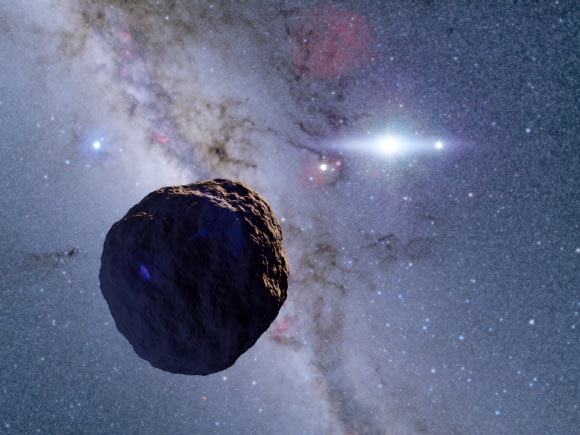A team of astronomers from Japan has discovered a 2.6-km (1.6 mile) wide object in the Kuiper Belt, a distant region of icy debris that extends far beyond the orbit of Neptune.
Kuiper Belt objects (KBOs) are thought to be remnants of the early Solar System, and their size distribution provides an opportunity to explore the formation and evolution of the outer Solar System.
In particular, the size distribution of kilometer-sized (with a radius between 1 and 10 km, or 0.6 and 6.2 miles) KBOs represents a signature of initial object sizes when planets form.
These small KBOs are extremely faint, and it is impossible to detect them directly. Instead, the monitoring of stellar occultations (events that occur when a planetary body hides a star as it moves across the sky) is one possible way to discover these objects.
By monitoring the changes in starlight that occur during an occultation event, astronomers can determine the KBO’s size and temperature.
“KBOs with radii from one to several kilometers are too distant, small, and dim for even world-leading telescopes to observe directly,” said Dr. Ko Arimatsu from the National Astronomical Observatory of Japan and colleagues.
“So we used a technique known as occultation: monitoring a large number of stars and watching for the shadow of an object passing in front of one of the stars.”
To achieve a challenging occultation observation, the scientists launched an observation project using amateur telescopes, named the Organized Autotelescopes for Serendipitous Event Survey (OASES).
They placed two small telescopes on the roof of the Miyako open-air school on Miyako Island, Japan, and monitored approximately 2,000 stars for a total of 60 hours.
Analyzing the data, they found an event consistent with a star appearing to dim as it is occulted by a 2.6-km-wide KBO.
“This detection indicates that kilometer-sized KBOs are more numerous than previously thought,” the researchers said.
“This supports models where planetesimals first grow slowly into kilometer-sized objects before runaway growth causes them to merge into planets.”
“This is a real victory for little projects. Our team had less than 0.3% of the budget of large international projects,” Dr. Arimatsu said.
The discovery is described in a paper in the journal Nature Astronomy.
_____
K. Arimatsu et al. A kilometre-sized Kuiper belt object discovered by stellar occultation using amateur telescopes. Nature Astronomy, published online January 28, 2019; doi: 10.1038/s41550-018-0685-8








